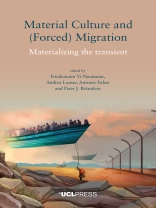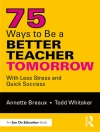Material Culture and (Forced) Migration argues that materiality is a fundamental dimension of migration. During journeys of migration, people take things with them, or they lose, find and engage things along the way. Movements themselves are framed by objects such as borders, passports, tents, camp infrastructures, boats and mobile phones. This volume brings together chapters that are based on research into a broad range of movements – from the study of forced migration and displacement to the analysis of retirement migration. What ties the chapters together is the perspective of material culture and an understanding of materiality that does not reduce objects to mere symbols.
Centring on four interconnected themes – temporality and materiality, methods of object-based migration research, the affective capacities of objects, and the engagement of things in place-making practices – the volume provides a material culture perspective for migration scholars around the globe, representing disciplines such as anthropology, sociology, contemporary archaeology, curatorial studies, history and human geography. The ethnographic nature of the chapters and the focus on everyday objects and practices will appeal to all those interested in the broader conditions and tangible experiences of migration.
Praise for Material Culture and (Forced) Migration
‘This volume offers an original and significant contribution to the discipline of social anthropology at large, and to the burgeoning field of migration studies, as well as to the most intriguing advancement in the study of material culture. Integrating this open-ended anthropological discourse with methods and reflections emergent from archaeology and curatorial studies, the volume breaks new ground in terms of multi-disciplinarity, while raising careful considerations with regard to the ethics of doing research with people affected by (forced) migration.’
Sara Bonfanti, University of Trento
‘Material Culture and (Forced) Migration: Materializing the Transient presents an engaging read on the ways in which materials store memories and experiences and provide security and connections to loved ones throughout a person’s migration trajectory.’
Migration and Society
‘A helpful introduction to the materiality of migration’
Journal of the Royal Anthropological Institute (JRAI)
Inhoudsopgave
List of figures
List of contributors
Preface
Introduction: From ʻbare lifeʼ to ʻmoving thingsʼ: On the materiality of (forced) migration
Andrea Lauser, Antonie Fuhse, Peter Bräunlein and Friedemann Yi-Neumann
Part I – Transient foundations: on temporality and materiality
Introduction
Antonie Fuhse
1 Materializing transformative futures Georgina Ramsay
2 Camps as vessels of hope
Simon Turner
Part II – Materialising methods: applying things in (forced) migration research
Introduction
Friedemann Yi-Neumann
3 Why should(n’t) refugees be asked about their possessions? A research-ethical and methodological reflection on my fieldwork in a refugee shelter
Elena Höpfner
4 From biographies to biographical horizons: on life courses and things in forced migrations
Friedemann Yi-Neumann
5 The Dzhangal Archaeology Project and ‘Lande’: two archaeological approaches to the study of forced migration
Sarah Mallet and Louise Fowler
6 Undocumented migration and the multiplicity of object lives
*Ayşe Şanlı
Part III – Moving things: objects, emotions and relatedness in (forced) migration
Peter Bräunlein
7 Rakı table conversations of post-Gezi migration from Turkey: emotion, intimacy and politics
Özlem Savaş
8 Cooking ‘pocket money’: how young unaccompanied refugees create a sense of community and familiarity at a Danish asylum centre
Andrea Verdasco
9 Circulating things, circulating knowledge: why popular culture matters in exhibitions on migration
Maike Suhr
10 Lockdown routines: im/mobility, materiality and mediated support at the time of the pandemic
Maruška Svašek
11 The pram, the notebook and the plastic bag: mothering practices among migrants living in legal precarity in Berlin
Magdalena Suerbaum
Part IV – Taking and making place: engaging things
Introduction
Andrea Lauser
12 Materiality, agency and temporariness in refugee camps in Greece
Nada Ghandour-Demiri and Petros Passas
13 A retouched relationship: North American retirees’ quest for connection through popular art in Mexico
Rachel Barber
14 Place-making in the transient: things that matter in everyday life of Honduran refugees at the La 72 shelter
Yaatsil Guevara González
Index
Over de auteur
Peter J. Bräunlein holds an extracurricular professorship in the study of religion from the University of Bremen.












